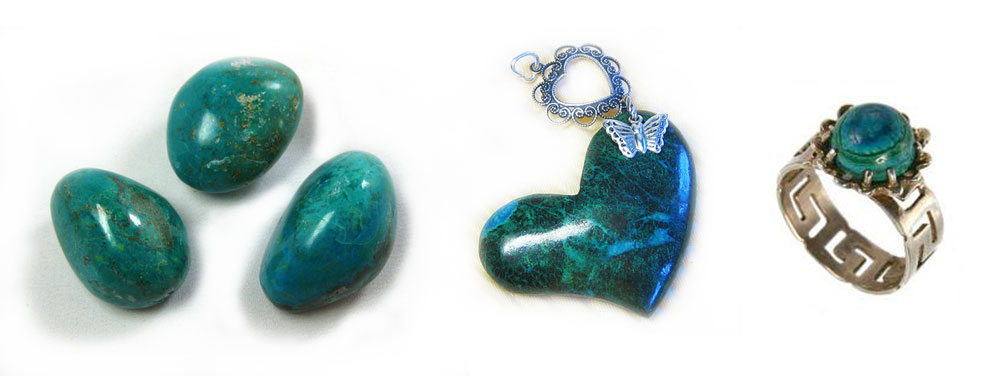Chrysocolla gemstone
Home ➤ Encyclopedia of gems ➤ Chrysocolla gemstonePhysical properties of chrysocolla
| Hardness: | 2-4 out of 10 on the Mohs scale |
| Luster: | glassy, waxy |
| Transparency: | opaque, sometimes slightly translucent |
| Color: | blue, cyan, green |
Characteristics of chrysocolla
Chrysocolla (Elatian stone) is a fairly rare gemstone that has been used since ancient times as a substitute for turquoise.
Chrysocolla got its name from a combination of the Greek words “chrysos” and “kolla”, which can be translated as “gold” and “glue”, respectively (chrysocolla owes this name to the fact that, judging by historical data, in the old days it was used for soldering gold) .

The color of chrysocolla can be from blue to almost black.
Chrysocolla, despite its rarity, has long been known to mankind. This precious stone was mined in the mines of King Solomon near the Gulf of Elat (hence the other name for the stone - “Elat stone”, although this name was used not only for a pure mineral, but also for a rock with chrysocolla veins).
Rings, earrings, pendants were decorated with chrysocolla, amulets and talismans were made from this stone.
How much does chrysocolla cost
The most expensive chrysocolla is blue-blue with rare black patches. Occurs rarely. Beads from such chrysocolla will cost $100 - $120. The composition is similar to turquoise and is often used as a substitute for turquoise.
The most common is chrysocolla with a blue-green pattern. Estimated up to a maximum of $90 per beads. It is similar to azurmalachite, but does not have even ring patterns and stripes.
The cheapest chrysocolla is green-yellow or green with black patches. Mainly used for carvings. Price - up to $70 per item. It looks a bit like green turquoise.
| ★ Turquoise gemstone | |
| See also: | ★ Cubic zirconia gemstone |
| ★ Morganite gemstone |





